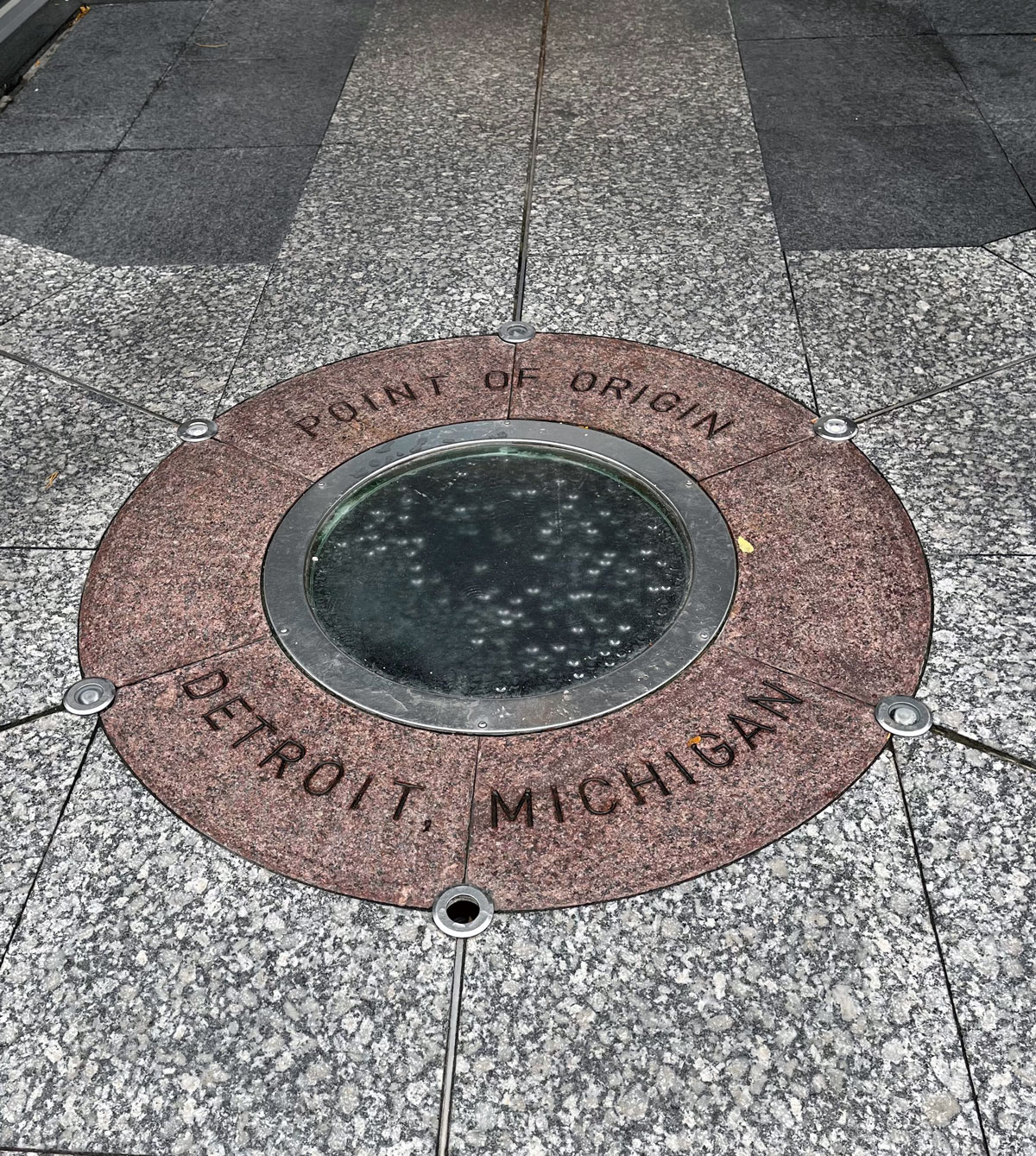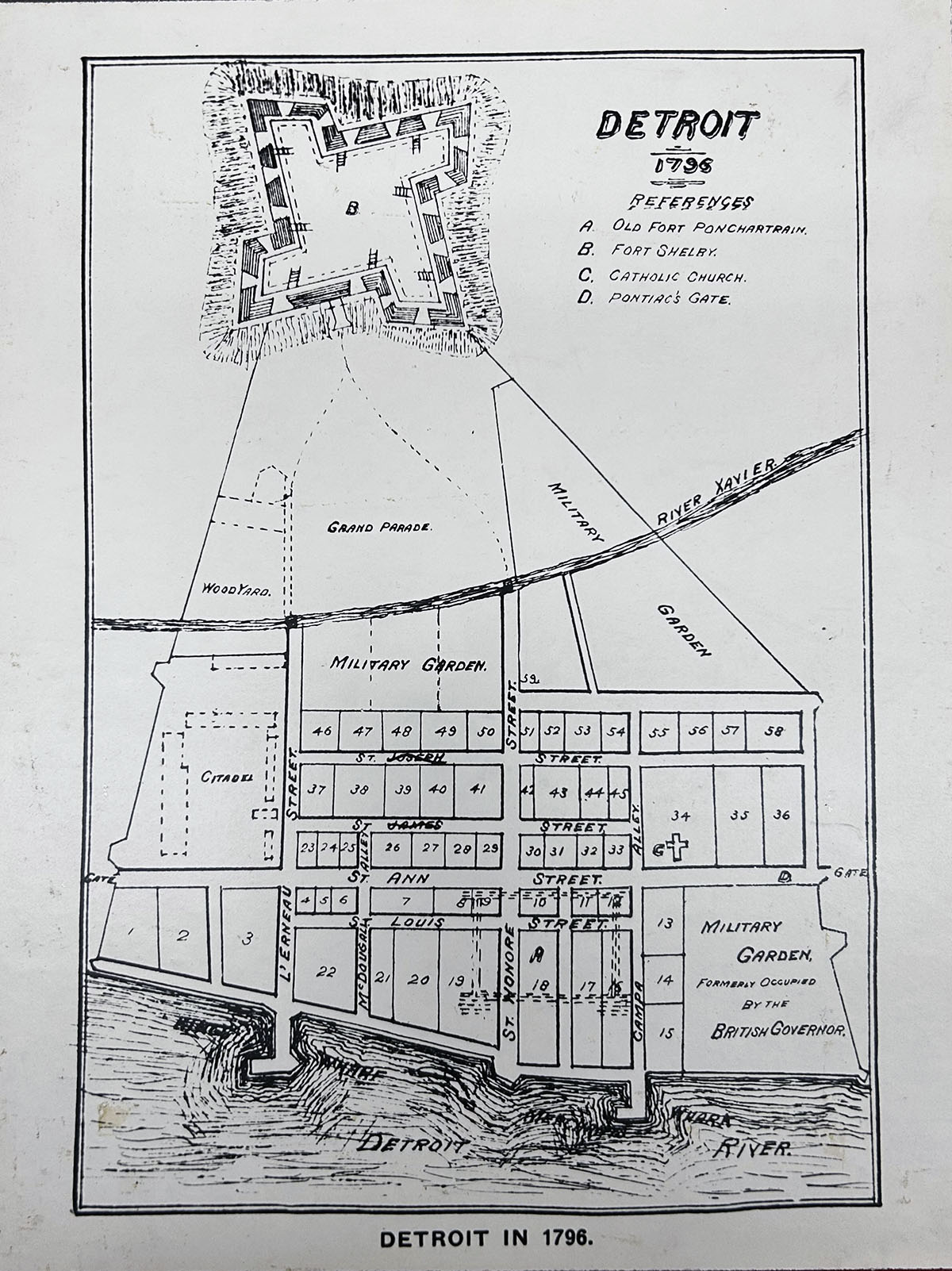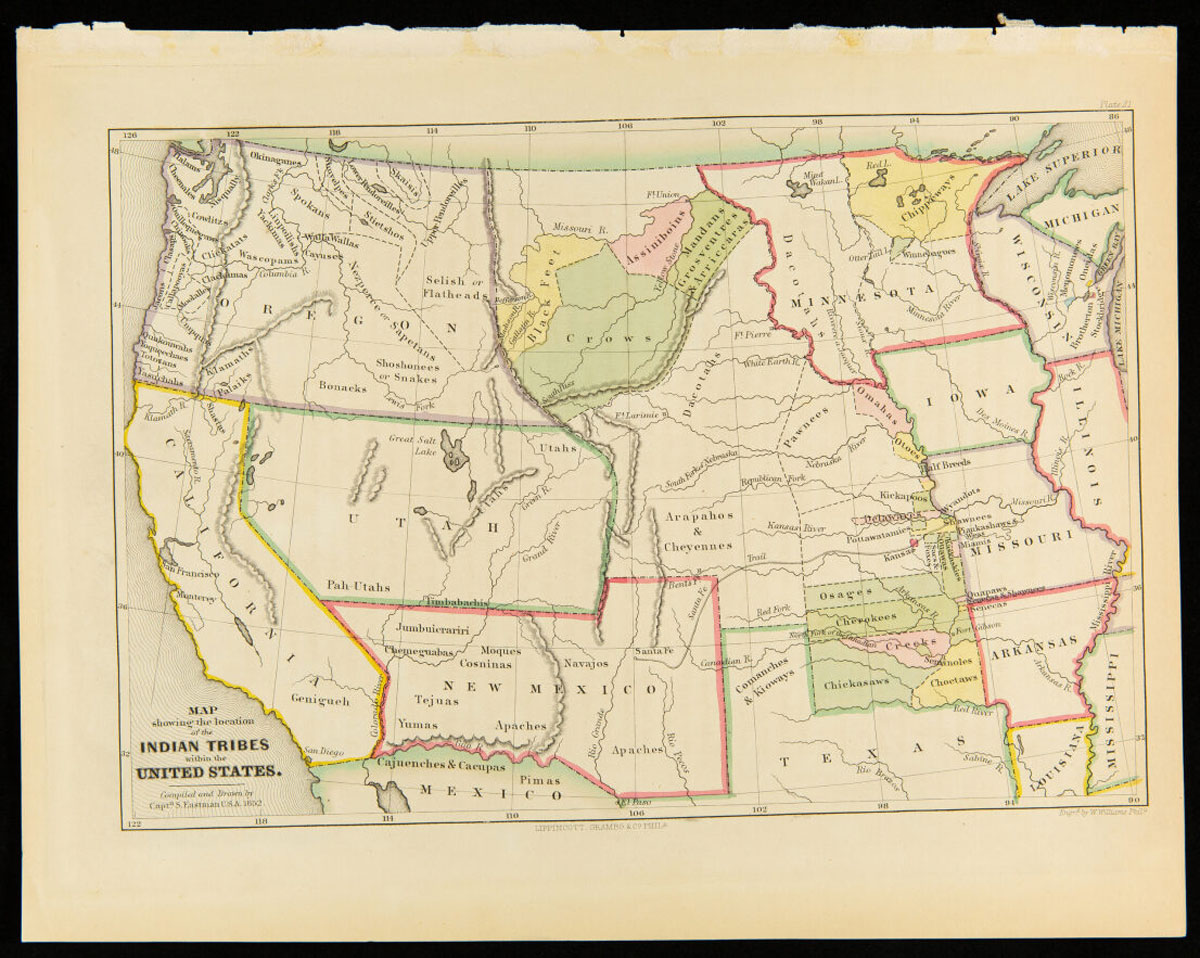Whose Land Are You On?
The Paris of the Midwest. That was the phrase used to describe Detroit in the late 19th century. It was a city designed with a mission, and that mission was to impress, which it did. But the city and the land surrounding it were home to thousands of Indigenous peoples who, more often than not, are left out of the story.

Point of origin marker in Detroit. / Photo courtesy of author.
History says that Antoine de la Mothe Cadillac founded Fort Pontchartrain du Détroit on July 24, 1701. But before that, several Indigenous nations were living on the land, called Waawiiyaataanong, meaning “where the river bends.” The Potawatomi, Odawa, Ojibwe, Miami and Huron all called this area home. As with colonization, though, these nations had to leave the site as European settlements began to spread.
When the fort and the city were being built, the Indigenous peoples in the area were encouraged to settle around the fort. In Cadillac’s mind, this added another layer of protection, not just for the fort but also for the fur trade. With its location on a waterway now called the Detroit River, Detroit was an important center for fur trading. The river linked Lake St. Clair to Lake Erie, both important in trade. As the settlement grew, the tides changed, and the Indigenous folks who called the area home soon found their lives turned upside down.

A map of Detroit as it was drawn in 1796. / From the collections of The Henry Ford.
The Seven Years' War raging in Europe between France and Great Britain eventually ended up with its theater in the colonies in North America. Detroit was in a valuable location, and while France and Great Britain declared peace in the area, each side had different goals, and Native nations were at the center. In 1752, a raid was conducted at Pickawillany, which was a British fort in Ohio, and after the fort fell, those Indigenous people who allied themselves with the British were attacked. Eventually, the colonies claimed by France and Great Britain resulted in the French and Indian War, and tribal nations had to pick the lesser of two evils to align themselves with. Great Britain eventually won the war, and tried to work with the Indigenous populations. Still, as time moved on, colonists from the 13 colonies began to move westward and push the Indigenous people out. This ultimately led to Pontiac's Rebellion, which led to the American Revolution.
It is important to note that while the history of Detroit and the surrounding areas is rich, the history of the first inhabitants should be included in the narrative. The French and Indian War, the American Revolution and even Pontiac’s Rebellion were about land. It was about who would control the land for France and Great Britain. It was about who would protect the land for Pontiac and countless other Indigenous people. It was about being able to stay in your homelands, and ultimately, these nations would be removed.

Map showing reservations in the United States in 1852. / THF611300
In 1807, the Treaty of Detroit was signed. This treaty was between the United States and the Odawa, Ojibwe, Wyandot and Potawatomi peoples. It was signed on November 17, 1807, and in the treaty, the Indigenous nations ceded the land that now makes up southeast Michigan and northwest Ohio. Ultimately, these nations and countless others were forced onto reservations, and life changed dramatically. Tribal nations from the area were moved to other parts of Michigan, Wisconsin and Oklahoma, and some left and moved to Canada. The look of the landscape that Indigenous peoples once stewarded was now different.
It is important to note that the land that is now Detroit, Michigan, the United States, was all Indigenous land. The land has a history and narrative to tell. The land is living and breathing. It is part of Indigenous culture and our history. Are you curious about whose land you may be on? If you are, check out this resource and start your learning journey today.
Heather Bruegl (Oneida/Stockbridge-Munsee) is curator of political and civic engagement at The Henry Ford.

